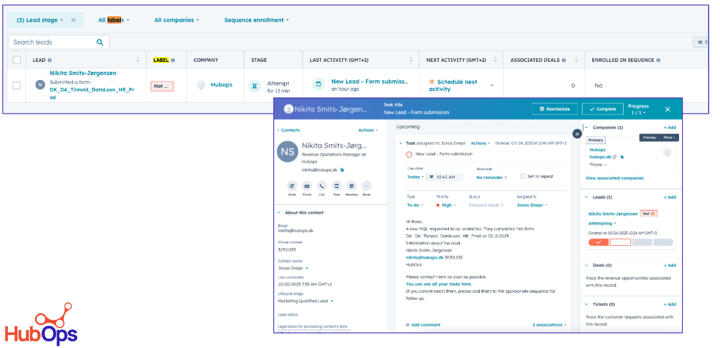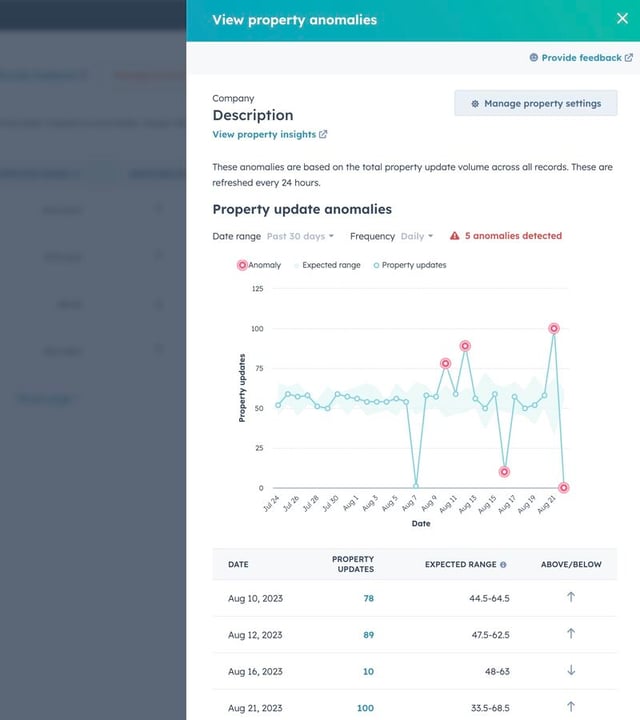Why Tool Stack Alignment, Integration, and Mapping is Important for Your Organization
In today's fast-paced business environment, tools, and technology play a crucial role in driving growth and profitability. However, as businesses invest in more tools, it becomes increasingly challenging to manage and integrate them effectively. This is where tool stack alignment, integration, and mapping come in. In this blog post, we'll explore why these practices are essential for your organization and how a central revenue operations (RevOps) function can help you to achieve tool stack alignment, integration, and mapping.
What is Tool Stack Alignment, Integration, and Mapping?
Tool stack alignment, integration, and mapping refer to the process of aligning and integrating the various tools and technologies used across different functions within an organization. The goal is to ensure that these tools work together seamlessly, providing a unified view of data and insights to enable better decision making.
Tool Stack Alignment
Tool stack alignment is the process of ensuring that all the tools and technologies used by your organization are aligned with your business processes and goals. This means that you need to evaluate whether each tool in your stack is helping you to achieve your revenue goals, and whether it is providing value to your organization. If a tool is not aligned with your business processes or goals, then it is time to reconsider its use.
Tool Stack Integration
Tool stack integration is the process of connecting different tools and technologies used by your organization to create a seamless workflow. This means that you need to ensure that your tools can communicate with each other, and that data can flow seamlessly between them. Integrating your tool stack can help you to save time, reduce errors and improve the overall efficiency of your business processes.
Tool Stack Mapping
Tool stack mapping is the process of creating a visual representation of your tool stack and how it aligns with your business processes and goals. This means that you need to map out each tool in your stack, its purpose, and how it fits into your overall revenue operations process. By mapping out your tool stack, you can identify any gaps or redundancies, and make informed decisions about which tools to use and how to optimize their effectiveness.
The Importance of a Central Revenue Operations Function
A central revenue operations function is a team or department that is responsible for aligning, integrating and mapping your tool stack to your business processes and goals. This team is typically made up of individuals with expertise in sales, marketing, customer success and operations, who work together to ensure that your tools and technologies are aligned, integrated and mapped to maximize their effectiveness.
Recent studies have shown that businesses with a centralized revenue operations function are more likely to achieve their revenue goals than those without one. According to a report by SiriusDecisions, organizations with a centralized revenue operations function are 34% more likely to achieve their revenue targets than those without one.
Having a central revenue operations function can also help you to:
-
Identify and address gaps or redundancies in your tool stack.
-
Ensure that your tools are being used to their fullest potential.
-
Improve collaboration and communication between different teams and departments.
-
Increase the overall efficiency of your revenue operations process.
The Importance of Tool Stack Alignment, Integration, and Mapping
-
Avoiding Duplication of Efforts and Wasted Resources: When tools are not aligned and integrated, teams may end up duplicating efforts or using tools that don't serve their specific needs. This can lead to wasted resources, inefficiencies, and missed opportunities.
-
Improving Data Accuracy and Quality: Data is the lifeblood of any business, and tool stack alignment, integration, and mapping can help to ensure that data is accurate, consistent, and accessible. This, in turn, enables better decision-making and more effective communication across teams.
-
Enhancing Customer Experience: When tools are aligned and integrated, it becomes easier to track and analyze customer interactions across the entire customer journey. This enables businesses to gain deeper insights into customer needs, preferences, and behavior, and to deliver a more personalized and consistent customer experience.
-
Enabling Scalability and Growth: As businesses grow and evolve, they need tools that can adapt to their changing needs. Tool stack alignment, integration, and mapping can help businesses to scale more efficiently and effectively, without having to constantly switch tools or invest in expensive customizations.
-
Cost savings: Tool stack alignment, integration, and mapping eliminate redundancies, reducing the need for multiple tools and licenses. This results in cost savings for the organization.
Recent Publications and Articles
There have been several recent publications and articles that highlight the importance of tool stack alignment, integration and mapping, and the role of a central revenue operations function in achieving revenue goals.
For example, a report by Gartner found that by 2025, 80% of B2B companies will have a dedicated revenue operations team to drive alignment, integration and execution of their go-to-market strategy.
In an article by Forbes, author Craig Rosenberg notes that "revenue operations is the glue that holds everything together," and that "without a centralized revenue operations function, it's easy to lose sight of the big picture and miss out on opportunities to optimize revenue."
-
The State of Sales Report by Salesforce: According to this report, businesses use an average of 16 different sales tools, with a significant overlap in functionality. The report emphasizes the importance of tool integration to avoid duplication of efforts and improve data accuracy and quality.
-
The Forrester Consulting Study on Revenue Operations: This study emphasizes the importance of aligning sales, marketing, and customer success teams to drive revenue growth. The study highlights the role of tool stack alignment, integration, and mapping in achieving this alignment.
-
The Importance of Tool Stack Alignment in Marketing Operations by LeanData: This article discusses the challenges of managing a large number of marketing tools and emphasizes the importance of tool stack alignment to improve efficiency, data accuracy, and customer experience.
The Role of Revenue Operations
Centralizing the management of tools and technology is critical for achieving tool stack alignment, integration, and mapping. This is where a central revenue operations (RevOps) function comes in. RevOps is responsible for streamlining processes, aligning teams, and driving revenue growth across the entire customer journey. By centralizing the management of tools and technology, RevOps can ensure that tools are aligned and integrated effectively, and that data is accurate and accessible.
Here are some ways in which RevOps can facilitate tool stack alignment, integration, and mapping:
-
Cross-functional alignment: RevOps teams work across different functions within an organization, ensuring that all tools and technologies used across functions are aligned with a common objective. This ensures that all teams work towards the same goal, resulting in increased efficiency and revenue growth.
-
Data integration: RevOps teams can help integrate the various tools used across different functions and ensure that data flows seamlessly between them. This enables businesses to get a comprehensive view of customer behavior and journey, enabling better decision-making.
-
Tool stack mapping: RevOps teams can help create a visual representation of the tool stack and how they interact with each other. This helps identify any gaps or redundancies in the tool stack and enables businesses to make informed decisions about which tools to keep, which
In conclusion, having a well-aligned, integrated, and mapped tool stack is essential for any organization that wants to achieve its revenue goals. A central revenue operations function plays a key role in ensuring that your tools and technologies are aligned, integrated, and mapped to your business processes and goals. By doing so, you can improve collaboration, increase efficiency, and maximize the effectiveness
Articles mentioned:
-
HubSpot: "Marketing Technology Landscape Supergraphic" https://www.hubspot.com/marketing-statistics
-
Deloitte: "The future of enterprise technology: 2020 and beyond" https://www2.deloitte.com/global/en/pages/technology/articles/future-of-enterprise-technology.html
-
Salesforce: "The State of the Connected Customer" https://www.salesforce.com/research/connected-customer/
-
Gartner: "Market Guide for Revenue Management" https://www.gartner.com/en/documents/3983135/market-guide-for-revenue-management
-
SiriusDecisions: "The Benefits of Revenue Operations: Why Marketing and Sales Operations Must Merge" https://www.siriusdecisions.com/blog/the-benefits-of-revenue-operations-why-marketing-and-sales-operations-must-merge
-
MarTech Today: "Why Marketing Operations is the key to solving today's digital marketing challenges" https://martechtoday.com/why-marketing-operations-is-the-key-to-solving-todays-digital-marketing-challenges-214123
-
Forbes: "What is Revenue Operations and Why Should You Care?" https://www.forbes.com/sites/forbestechcouncil/2020/01/24/what-is-revenue-operations-and-why-should-you-care/?sh=64e31c8d6e16
-
The Aberdeen Group: "The State of Revenue Operations 2019" https://www.aberdeen.com/research-report/the-state-of-revenue-operations-2019/
- Leandata: The State of Marketing Operations 2021: https://www.leandata.com/the-state-of-marketing-ops/





